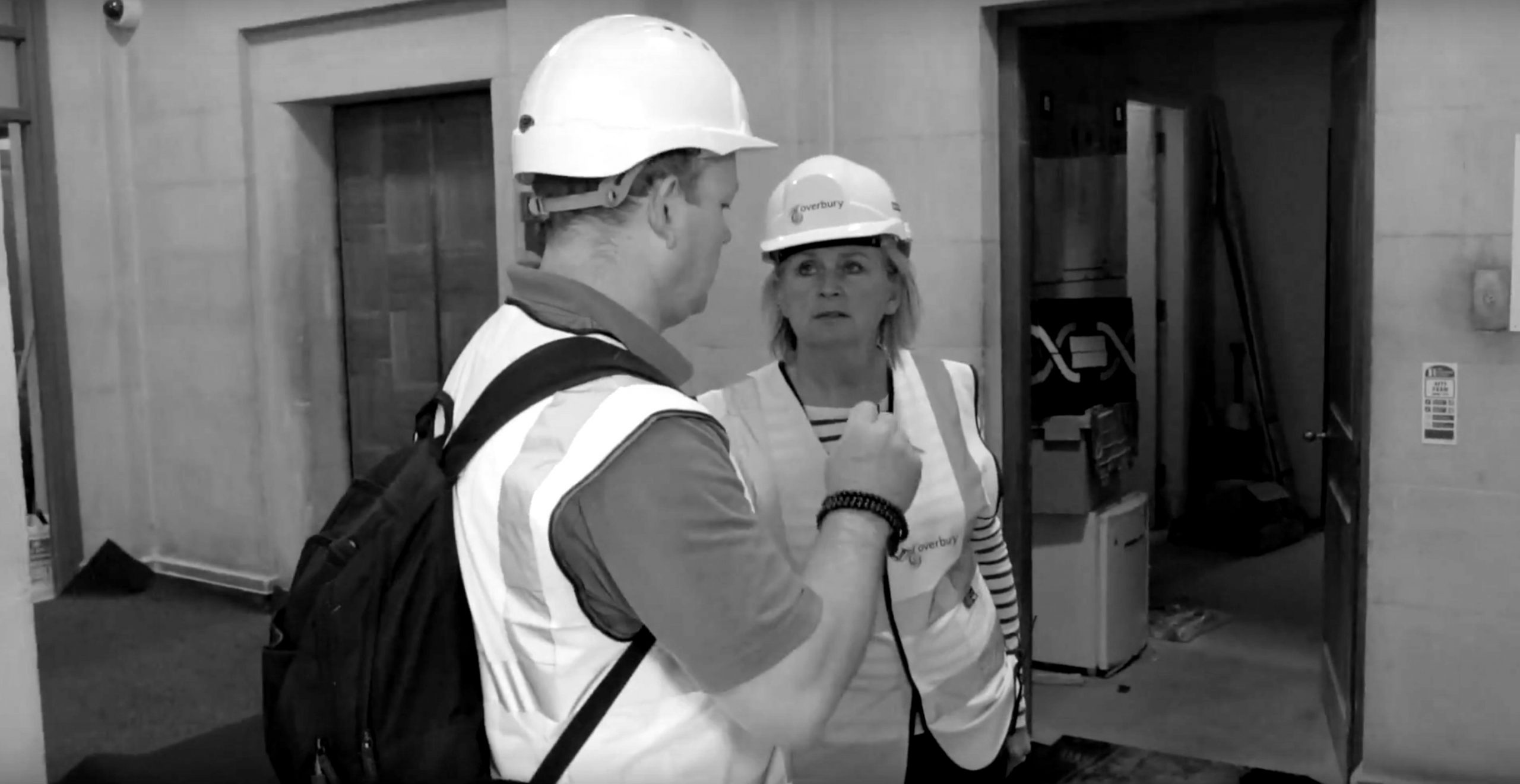— The PLACEmaking blog
Can AI distract from the range of benefits that are there to be exploited in the Smarter Workplace?
Author
Alison WhiteDate
September 16, 2019The term AI, or Artificial Intelligence, was plucked from history and adopted in 1956 to describe the processing logic of a programmable computer.
It’s quite marvellous that we are still using an expression coined over sixty years ago to describe the kind of ‘futuristic technologies’ that many of us are only just beginning to acknowledge – yet so far few of us have experienced.
But while for most of the time since then we have been happy enough to adopt a whole range of technology advances, why in the last ten or 15 years have we become increasingly cautious about the growth and development of AI? It might well be because the technologies we’ve experienced in the general office workplace so far haven’t really made the big breakthroughs we were promised they would, and what has been delivered has made only incremental differences to our everyday lives. There has been no big bang as such, and so we’ve had sufficient advance warning and time to adapt, retrain or reinvent our way of working.
Whilst in some environments the prospect of working alongside AI has been embraced and is well established, what we’re continually being told is AI will in some industries and sectors replace people. We haven’t heard too much about the impact AI will have on the office workplace. Is the workplace immune or have we perhaps been lured in to a false sense of security because although office-related technology has unmistakably developed, on the whole the office workplace itself remains largely the same – albeit tweaked over time thanks to different generations of fashions in furniture and decoration styles.
Is Smart Working creating an opportunity for embracing emerging technologies?
Now that Smart Working is being widely acknowledged across both the private and public sectors, however, we should be poised and ready for the next wave of AI related technology-enabled change – not simply with regard to where we work but also how we work. Yet there are still barriers to embracing the real benefits of Smart Working, and some of those barriers include technology – what’s available, how we should use it, how well it performs, and how we are supported when we are increasingly reliant on it.
Our recent field case studies highlight common Smart Working implementation issues. In amongst broader references to inconsistent and untargeted communications, one specific issue stands out: the lack of anyone who is able to articulate (in a language anyone in the business can understand) exactly how the technology device, hardware or software about to be implemented will actually improve a User’s day-to-day working experience. Too often the purpose for the upgrade becomes muddled by the process of roll-out, and project management ‘time and cost’ measures dominate feedback. Targets for User improvements are rarely defined, and almost never tested or reported and so the prospect of unknown AI related technology entering the workplace can be viewed with dread.
But with the principles of Smart Working now firmly established, the opportunity should really exist to embrace the next generation of technologies that will facilitate a step change in our working processes, patterns and styles. In order to foster this culture, we need to recognise and address the challenges that prevent many from fully trusting the technology solutions already available.
But what we also need to do better is engage Users in envisaging what sort of workplace experience they want, and subsequently present better the technologies on offer so that they can be seen to meet those expectations. If we can articulate what we want in non-technical language then we have a better chance of encouraging people to use and benefit from such technology investments.

We asked a selection of Users who have already embraced Smart Working to envisage their future workplace experience, highlighting what they think could be achieved and improved by AI.
‘We are now working remotely more and more often. When we do go to our (employer’s) office Building we frequently feel like a visitor – tolerated but not necessarily welcome. We want to be able to interact with the Building so that our personal preferences, needs and expectations are recognised and facilitated as much as those people based in the building full time.
‘When we’re working remotely, we want to use that time to concentrate on completing specific tasks or hitting deadlines. When we go into the office we’re there for a reason which includes collaborating and interacting with others, so we want the Building to actively connect us with the people who can help solve our problems and assist us with seeking out solutions. We want facilities that support our needs to be available and we want to use space and facilities that will directly help us to complete our intended tasks. We want the Building to do more than that though – we want it to facilitate our activities but also monitor our progress in achieving our planned objectives, and nudge us to stay on target and avoid getting distracted’.
How could AI change that User experience?
‘We want AI to support us in effectively removing repetitive, mindless and basic administrative duties, freeing up our time for tasks and interactions that are more skilled, creative, engaging and empathetic. But we also think AI could help us to solve problems or make better choices.
‘For example, we want to explore systems that go beyond simple booking or scheduling tools. Perhaps what we want AI to do is not just agree to a basic request for booking travel, but to analyse the request and offer alternative responses or suggestions including options that we may be unaware of or had simply not even considered. AI should be able to adapt to and help solve the issues that we are facing, opening up alternative options for us to consider and potentially select.’
How could AI help Smart Working support services to operate more effectively?
‘What we want is active problem-solving support with dynamic, adaptive help that is tailored to our individual needs rather than simply reading from a script. We need a more intelligent form of assistance that not only records that there is an issue, but analyses the context of the problem we have and provides an intelligent response.
‘For example, we often get frustrated by the standard response we get when we contact support services if we’ve got an ICT problem, which too often is just “contact the (outsourced) Help Desk”. We then have to repeat over and again what the problem is……only for them eventually to say that we need to take the laptop in (where?) for repair!”. AI should make the response more personal. As well as a first line of support to help us with common problems it should recognise our specific circumstance, offer a more appropriate response relevant to the context of our working environment. One size definitely doesn’t fit all!’
The future of technology in the workplace does not lie with the adoption of AI for the sake of AI, but in using it in an intelligent way that people can recognise will assist them in their day to day duties. Rather than simply being a tool for everyday tasks, AI could – and should – be a valuable contributor to the collaborative process: facilitating an ongoing conversation between user and system that not only assists in project development but also acts as an intelligent facilitator and collaborator in achieving a valued outcome. Presented in this way, the next wave of AI-based technology should be welcomed and not feared. Not regarded as a background device that sits idly by, only stimulated into use when needed, but instead a fundamental and active part of any team and in partnership with people.
Subscribe to our mailing list
Let's Work Together
Office
Box 18, Boxworks
Clock Tower Yard,
Bristol BS1 6QH

